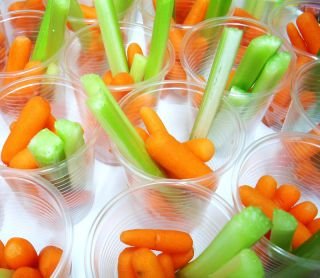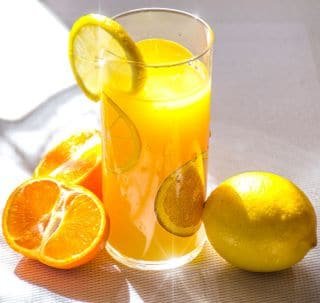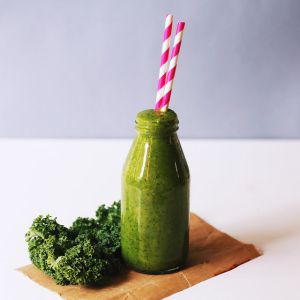Are you new to juicing? Juice is such an incredible way to nourish the body. It is easy for the body to digest, and delivers large amounts of vitamins and nutrients in small quantities of liquid. If you are new to juicing, there is much you need to know before you go and buy a juicer. You may have heard that you should spring for a cold press or masticating juicer rather than the more popular centrifugal ones. But are masticating juicers really better than centrifugal juicers?
If you’ve done some initial checking, you may see that most masticating ones seem to be more expensive and work slower. It can be easy to feel overwhelmed when you go deeper into all the differences between masticating and centrifugal juicers and figuring out which juicer might be the better choice for you. If you want to compare the two types properly, just keep reading.
Are Masticating Juicers Really Better Than Centrifugal?
On the whole, yes they are. The quality of juice from them is better and you can juice a larger variety of fruits and vegetables. They’re less noisy and less expensive in the long term due to a variety of factors. We’ll delve into those factors and much more below. And if this convinces you to buy a cold press juicer, then read our next guide to learn the difference between the vertical vs. horizontal masticating juicer.
Table of Contents
- 1 Are Masticating Juicers Really Better Than Centrifugal?
- 2 What is a Centrifugal Juicer?
- 3 What is a Masticating Juicer?
- 4 Centrifugal Vs Masticating Juicers
- 5 Is Masticating the Same as Cold Press?
- 6 Pro and Cons of a Centrifugal Juicer
- 7 Pro and Cons of a Slow Juicer
- 8 Who should get a Centrifugal Juicer
- 9 Who should get a Masticating Juicer
- 10 Conclusion: Which Juicer is Better – Masticating or Centrifugal?
What is a Centrifugal Juicer?
Centrifugal juicers use centrifugal force to push the juice out of the pulp. They have a flat cutting blade, which is on the bottom of a spinning strainer. The blade cuts the produce into pulp, and the centrifugal force (6,000-14,000 RPM) pushes the pulp against the juicing strainer.
The juice then seeps out through the holes in the strainer and the remaining pulp is expelled into a separate container.
This high speed process generates a lot of heat and the motor rating needs to be high to handle the process without burning out.
What is a Masticating Juicer?
Masticating juicers are known by many different names, including cold press juicers, slow juicers, and auger or gear juicers. The thick screw-like single or dual augers use a grinding and then pressing action. The produce is slowly crushed at around 40-100 RPM and the juice is then forced through a mesh screen for collection.
There is little to no heat generated here and the motor is usually low powered because of the slow speed of the auger.
Centrifugal Vs Masticating Juicers
Do Centrifugal Juicers Kill nutrients? A Juice Quality Comparison
Along with differences in design, let’s look at differences in masticating vs centrifugal juicer nutrients and quality.
Centrifugal: Because a centrifugal juicer operates at such a high speed, a lot of heat is generated. This heat destroys vital nutrients, making the juice a much lower quality than what is possible with some other types of juicers. Not to mention that your glass of juice may not be as cold as you’d like straight out of the juicer.
The heat generated also oxidizes the juice faster and it degrades within just a few hours after juicing. You may also notice that the juice has a lot of foam and separates pretty quickly when left standing.
Another key in the slow juicer vs fast juicer comparison is that fast juicers have a low juice yield, and the leftover pulp will feel quite wet and wasteful. In order to gain more juice out of your produce, you can feed this pulp back into the juicer for a second or even a third pass through until the pulp feels dry enough. However, this can be quite time consuming.
Masticating: Masticating juicers, on the other hand, create less heat than the centrifugal juicer, therefore the juice retains much more of its nutrients and has a much lower oxidation rate. The juice lasts longer than juice from a centrifugal juicer, separating slowly and degrading within 36-72 hours.
The juice itself is of very high quality and has little foam. Slow juicers produce a high juice yield, and the leftover pulp is dry after just one pass through. There is very little waste left over.
Both juices can contain some solids, but that depends on the straining filter of each individual juicer. Here are the best no pulp juicers and the best juicers that keep some pulp.
Price range of each type of juicer
Centrifugal: Centrifugal juicers are the budget-friendly juicers. They get the job done (for the most part) for a decent price. You can find them ranging in cost from about $40-$250. That being said, anything below $60 is probably not worth getting, as the quality will be very low.
You will end up spending more in the long run, however, with a centrifugal juicer. While you can find centrifugal juicers that are much more expensive, there are better juicer options than a high-end centrifugal juicer that you should consider.
One big difference between a masticating and centrifugal juicer is that the latter will need frequent replacement of certain parts, as the high RPMs cause fast wear and tear. The warranties tend to be short because of this. If you have to replace parts every year or two, the costs of these parts add up in a short time.
You will also need more produce per ounce of juice because extraction is not very efficient, unless you pass the leftover wet pulp through 1 or 2 more times. If you’re juicing for a family, that’s a lot of produce!
Masticating: Masticating juicers are typically two to three times more expensive than the centrifugal juicers, but they have qualities that are well worth the cost. That being said, you can normally find a lower-quality cold press juicer that is comparable in cost to a higher-end centrifugal juicer.
The warranties are pretty long and very few parts fail quickly, so there’s not much likelihood of needing to spend anything more after your initial purchase.
If you’re juicing for more than 1 or 2 people, you’ll save on the cost of veggies and fruits in the long term, as masticating juicers are more efficient in extraction.
What Types of Fruits and Vegetables can be Juiced?
 Centrifugal: Centrifugal juicers work well for hard fruits like apples, pears, and peaches. They can also handle thick vegetables, like carrots, celery, and beets. They are not designed to handle citrus fruits, tomatoes and other soft fruits and don’t do a good job with wheatgrass and leafy green vegetables.
Centrifugal: Centrifugal juicers work well for hard fruits like apples, pears, and peaches. They can also handle thick vegetables, like carrots, celery, and beets. They are not designed to handle citrus fruits, tomatoes and other soft fruits and don’t do a good job with wheatgrass and leafy green vegetables.
Masticating: Masticating juicers can juice hard as well as soft fruits like berries and oranges, and fibrous vegetables like celery really well. When a vegetable is high in fiber, extracting juice requires an efficient machine. That’s why a cold press masticating juicer is the best kind of juicer for celery. In addition, they handle leafy greens like kale and spinach, and even wheatgrass easily.
Extra Use with Additional Accessories
Centrifugal: The centrifugal juicer is only good for making juice from certain types of fruit and vegetables.
Masticating: Masticating juicers, however, work very well for making baby food, pasta, sorbet and ice cream if the model comes with additional accessories. You can also use the masticating juicer for making nut milk and nut butters from raw nuts.
Which Type is Easier to Clean?
Centrifugal: These fast juicers generally take a little more time to clean mostly because there are more parts that need to be disassembled, washed, and reassembled. Some parts have to be aligned and fitted properly before operating the machine. The remaining pulp is usually not fully dry and is ejected out with great force because of the high speed of juicing. This tends to create a mess both inside and outside the juicer.
Masticating: Masticating juicers are very simple to assemble and take apart for cleaning and there are very few parts to clean as well. The pulp leftover is very dry, which keeps the inside of the juicer relatively mess-free. The slow juicing speed also gently expels the pulp without creating splatter.
Is Masticating the Same as Cold Press?
For most intents and purposes, cold press juice is the same as masticated juice. However, the term “cold press” traditionally comes from the juice press. It is a machine that actually presses produce between two heavy plates to squeeze out all the juice. There’s no grinding involved and this method extracts the purest possible juice that takes even longer to separate – about 5 days.
Only bottled juice companies use juice presses, as they’re too expensive and bulky for home use.
A masticating juicer is the next closest thing and the juicing fraternity interchanges these terms because the difference in quality of juice between these two methods is negligible and both use slow juicing as a way to extract.
Pro and Cons of a Centrifugal Juicer
Sometimes the best way to make a decision is to write out a list of pros and cons. Here is what we have gathered for the centrifugal juicer.
Pros
Cons
Pro and Cons of a Slow Juicer
Masticating juicers are great machines, but they also have their downsides. Here is a list of their pros and cons.
Pros
Cons
Who should get a Centrifugal Juicer
Centrifugal juicers are still decent juicers, but certain people will benefit from them more so than others.
If you are new to juicing or just a casual juicer and only want to juice certain types of produce, you can get by with a centrifugal juicer. While your selection of produce will be limited, you can still whip up some recipes and be content for the time being.
This is also a fine option if you’re not that worried about losing a small amount of nutrients or having the perfect glass of juice.
If you are going to juice just for yourself and you know what produce you like and do not like, the centrifugal could be a good fit.
Who should get a Masticating Juicer
 Masticating juicers are more appropriate for people who know all about juicing and are health fanatics. These people want to make decent quality juice for the best price possible, and from a wide selection of produce options.
Masticating juicers are more appropriate for people who know all about juicing and are health fanatics. These people want to make decent quality juice for the best price possible, and from a wide selection of produce options.
Therefore, this juicer would work well for the juicing passionates. If you are into making new recipes, want to experiment with different foods and flavors, and want the benefits of increased nutrients, the masticating juicer is the better choice.
If you have a family and want to start making juice for your loved ones, you will do better with this juicer. You have more options in the way of what fruits and vegetables you can juice and your produce costs won’t skyrocket because there’s very little waste produced.
Juice bars will also want to consider the masticating juicer. They will have more flexibility in catering to the customer’s needs, and they can advertise the nutritional benefits of their juice.
Conclusion: Which Juicer is Better – Masticating or Centrifugal?
Both the centrifugal juicers and masticating juicers are great for home use but the slow masticating type is a bit better overall. While the centrifugal juicer is more affordable initially, the masticating juicer has better features.
Not only can you juice a wider selection of produce with a slow juicer, but the quality of the juice will far surpass that of any centrifugal juicer. NO nutrients will be destroyed, and the juices will last longer in the fridge. Not to mention, you can employ the masticating juicer for other uses, like making ice cream, baby food, and nut butters and milks.
While the best juicer out of the two will largely depend on your needs, the masticating juicer is overall the better choice.
It should be noted that if you prefer thicker juices and smoothies with the fiber intact, then a relatively new appliance gives you more benefits overall. Compared to a slow juicer, a vacuum blender prevents oxidation by removing all air from the jar before blending, thereby retaining essential nutrients and vibrant color, reducing foam and separation, and lengthening the shelf life of the drink. Some vacuum blenders have an external detachable vacuum pump, while others have one inbuilt.
Featured image: Photo by Alisha Mishra from Pexels
“Carrots and Celery” Photo by Honey Tee is licensed under CC BY 2.0
Orange Juice Photo by PhotoMIX Company from Pexels


